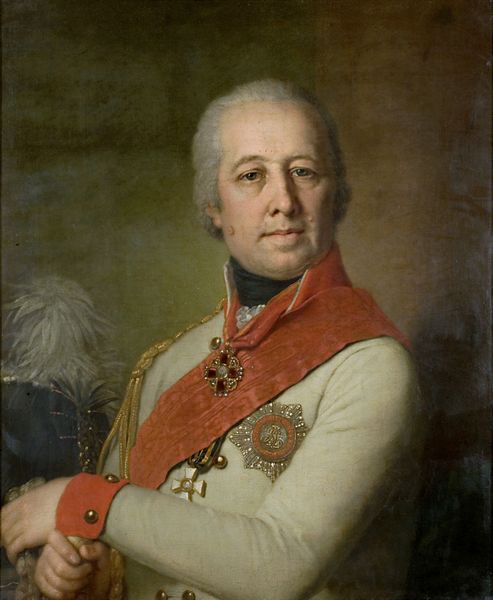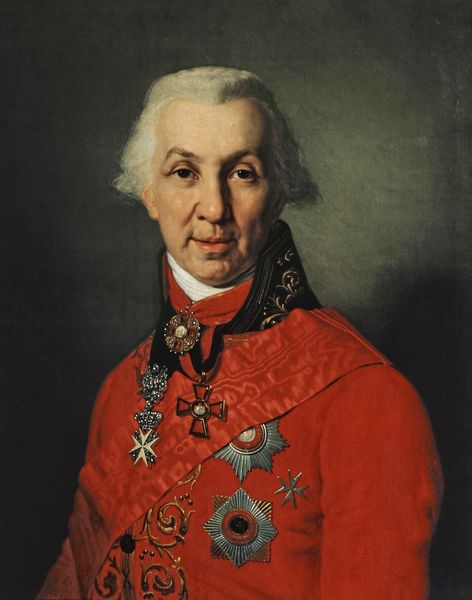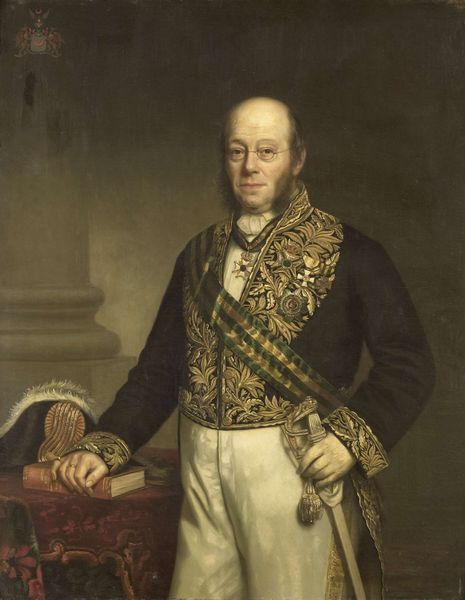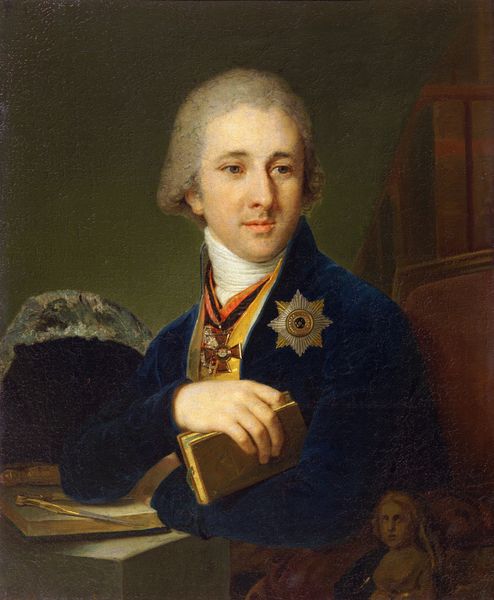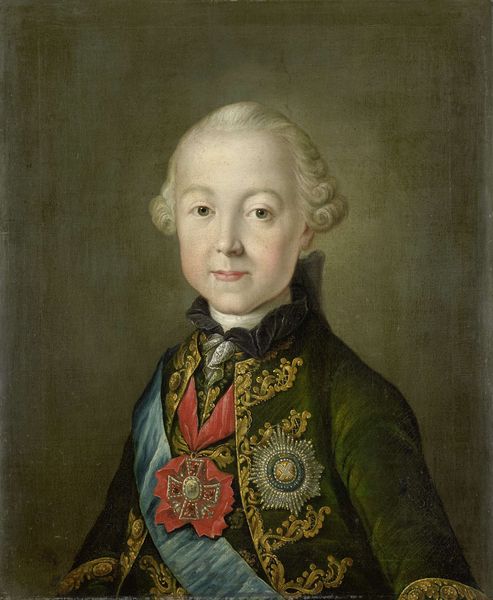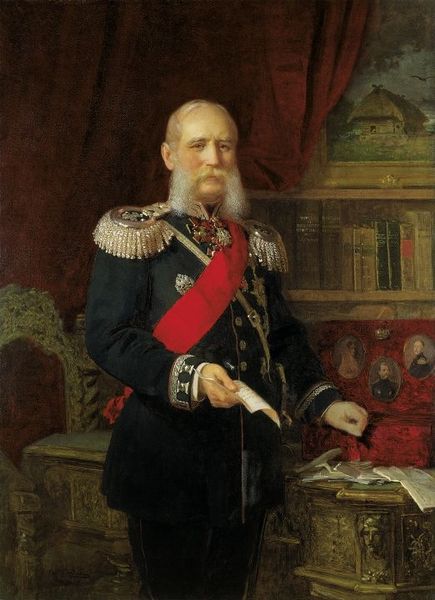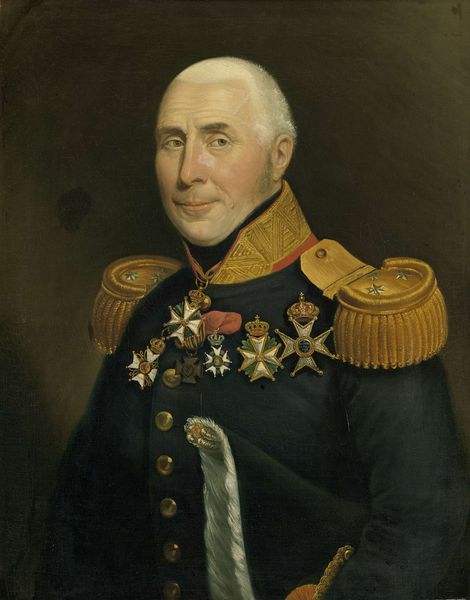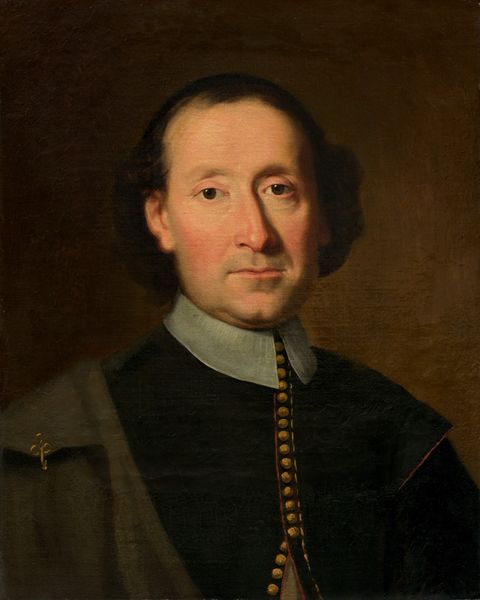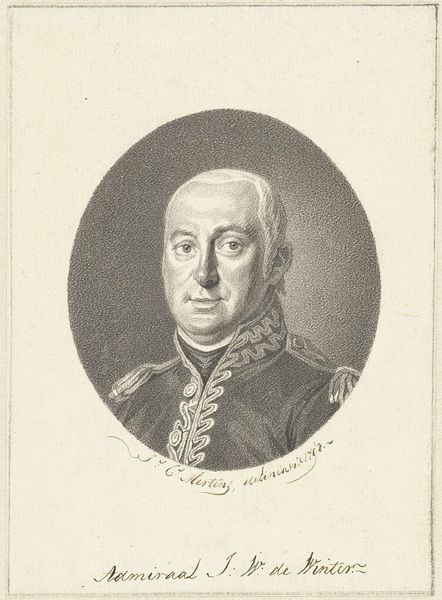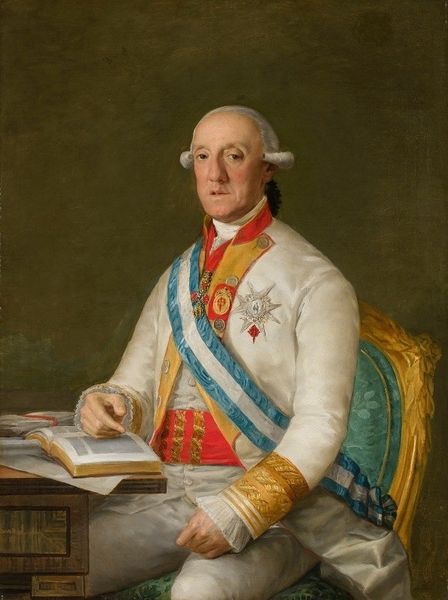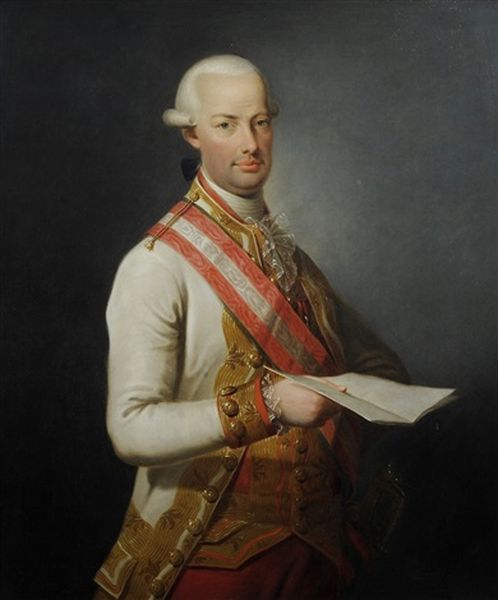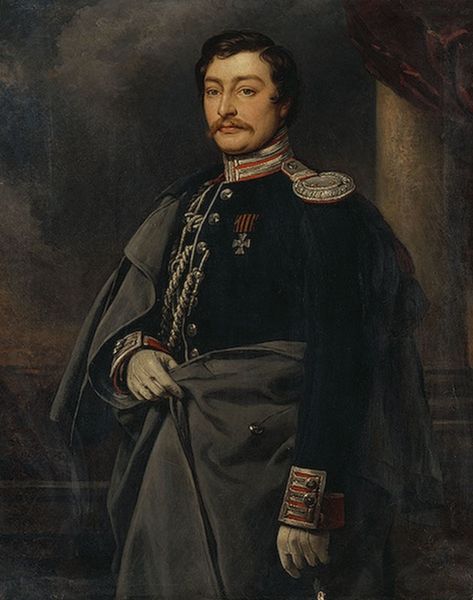
Gerard Johan Verloren van Themaat (1809-90). Lid van de Gedeputeerde Staten van Utrecht 1874
0:00
0:00
Dimensions: height 68.4 cm, width 52.7 cm, thickness 2.5 cm, depth 6.5 cm
Copyright: Rijks Museum: Open Domain
Curator: What strikes me immediately about this painting is its somewhat subdued elegance. There's a formality to the sitter's pose, but also a certain relaxedness, wouldn’t you agree? Editor: Indeed. Before we get ahead of ourselves, let’s introduce the work. This portrait by Johan Heinrich Neuman, dating to 1874, portrays Gerard Johan Verloren van Themaat, a member of the Deputed States of Utrecht. It's an oil painting, and like so many of the era, the emphasis is on capturing likeness and status. The very means by which images like these circulated reflected specific class interests, too. Curator: Absolutely. And I see how the artist has used light and shadow to create a sense of depth, giving the subject a presence. Note, too, the arrangement of objects-- the hat and sword on the green upholstered side table introduce interesting complementary colors and create visual rhythm. Editor: And think about the social function of such a portrait. Consider who would have commissioned it, viewed it, and the power relations at play in depicting a man of this standing. How does Neuman negotiate those material and cultural constraints of portraiture during that period? Curator: It's undeniably a power statement. The details in the jacket, the carefully groomed facial hair, the decorations; each is a symbol of achievement and status, intended to inspire deference. Yet, the way Neuman renders him feels very humane; this isn't merely a figurehead. It really is an excellent composition! Editor: It reflects, also, the increasing industrialization and economic shifts of the late 19th century, particularly in the Netherlands. How would Themaat's position, depicted here, have related to labor, capital, and those broader changes in the material conditions of life for the vast majority of the population? Curator: A necessary perspective! Perhaps what ultimately captivates me is the intimacy Neuman creates, despite the formality. There's something enduring in his ability to capture a man poised between tradition and change. Editor: Precisely. It’s through understanding that broader network of material processes, social relations, and cultural meanings that the formal qualities of the image start to really resonate and offer important understandings about 19th-century Dutch society.
Comments
No comments
Be the first to comment and join the conversation on the ultimate creative platform.
